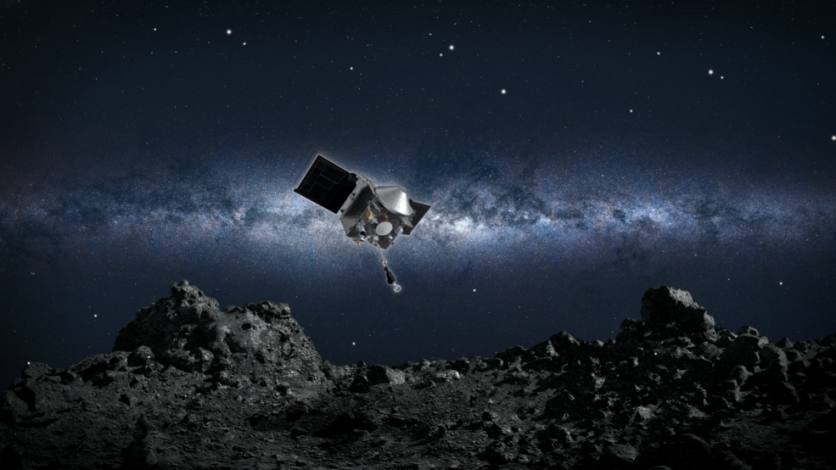NASA has successfully removed and collected 70.3 grams of asteroid Bennu rocks and dust from the OSIRIS-REx capsule without even opening it yet. It surpassed the initial target set by the space agency, which aimed to secure a minimum of 60 grams from the asteroid.
However, it is important to note that this represents only a portion of the total sample that the mission endeavors to obtain. In short, there is more to come!

Asteroid Bennu Materials From NASA's OSIRIS-REx Mission
According to NASA, the sample processed so far includes dust and rocks found on the outside of the sampler head and a portion of the bulk sample from inside the head, accessed through the head's mylar flap.
That means there is still a substantial amount of material within the sampler head, known as the Touch-and-Go Sample Acquisition Mechanism (TAGSAM), which is slated for extraction at a later time. This additional material will contribute significantly to the overall mass of the collected sample.
In recent operations conducted at NASA's Johnson Space Center, the approach to opening the TAGSAM head underwent a significant revision. This component housed the majority of the rocks and dust collected during the spacecraft's mission in 2020.
Despite encountering challenges in removing two of the 35 fasteners, the team accessed some of the material by employing tweezers or a scoop through the mylar flap, according to NASA.
This method, combined with the earlier collection of material outside the head, culminated in a total mass that exceeded the initially set target of 60 grams.
Remaining Asteroid Bennu Sample
In the forthcoming weeks, the team will dedicate their efforts to refining a new procedure that will facilitate the extraction of the remaining asteroid sample from the TAGSAM sampler head.
They will also continue the meticulous processing of the material obtained this week. The OSIRIS-REx science team is poised to proceed with the thorough characterization of the extracted material and initiate the analysis of the bulk sample gathered thus far.
NASA noted that all curation activities pertaining to the sample, including work on the TAGSAM head, were conducted within a specialized glovebox. This environment is maintained under a continuous flow of nitrogen to ensure that the sample remains in pristine condition, ready for future scientific examination.
Any tools or procedures proposed for extracting the remaining material must strictly adhere to the constraints of the glovebox and, most importantly, must not compromise the scientific integrity of the collection.
Additionally, according to NASA, these procedures must align seamlessly with the stringent standards of the clean room. As the team embarks on developing the procedure to access the final portion of the material, the TAGSAM head has been isolated from the active nitrogen flow within the glovebox.
It is securely stored in its designated transfer container, sealed with an O-ring, and further enveloped in a sealed Teflon bag. This elaborate process is put in place to guarantee that the sample remains are safeguarded within a stable, nitrogen-rich environment.
Related Article : NASA's James Webb Discovers New, Never-Before-Seen Feature in Jupiter's Atmosphere-What Is It?

ⓒ 2025 TECHTIMES.com All rights reserved. Do not reproduce without permission.




